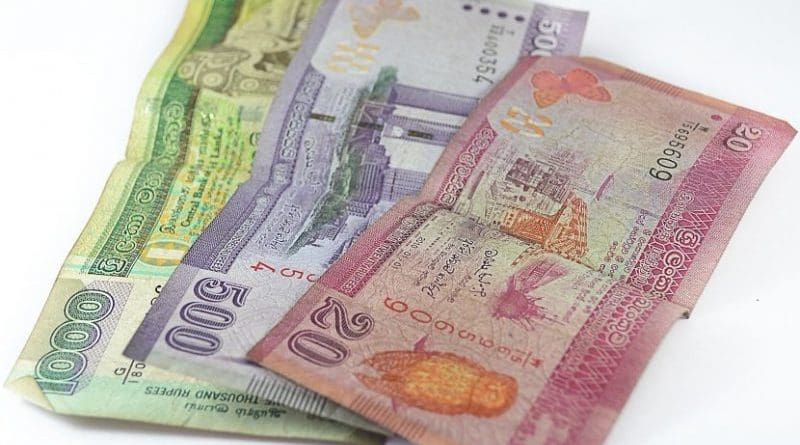How Sri Lankan Remittances Are Defying COVID-19 – Analysis
By Bilesha Weeraratne*
International migrants have historically been a driving force of the Sri Lankan economy and during the COVID-19 pandemic their remittances have helped boost the country’s foreign exchange earnings.
In 2019 over 200,000 Sri Lankans left for foreign employment. 85 per cent headed to the Middle East. The pandemic caused worker migration to decrease by 56 per cent in the first half of 2020 compared to 2019. By October 2020 over 54,000 Sri Lankans were repatriated, including nearly 18,000 migrant workers from the Middle East. Another 43,000 are waiting to be repatriated. Such high returns are due to job losses, wage cuts and other negative employment outcomes surrounding the pandemic.
With the virus raging across the world, remittances to Sri Lanka for 2020 were projected to decline below the US$6.7 billion received in 2019. The emerging lockdowns, economic contraction and lay-offs seemed to hold up these projections, with steep declines in remittances to Sri Lanka in March and April 2020.
But remittances saw a speedy recovery from May 2020. Many viewed May as the calm before the storm, fearing a huge slump in subsequent months due to the rising economic impact of the pandemic. Defying expectations, June remittances (US$702 million) surpassed May and July, becoming the third highest monthly figure since 2009.
Even though August saw a 5 per cent decline relative to July, in September 2020 remittances to Sri Lanka were US$703 million. In October and November, they fell to US$631 and US$612 million, respectively. But overall, from January to November 2020, total remittances to Sri Lanka increased by 3.9 per cent compared to the same period in 2019. Two of the top four monthly remittances since 2009 were recorded during the COVID-19 pandemic.
The decline in remittances in March and April 2020 had mainly been due to the restrictions on mobility faced by remitters overseas, who rely on physically visiting remittance service providers. And in March and April 2020, Sri Lanka experienced a similar scenario. Once restrictions eased, backed-up funds were sent in addition to regular amounts. The increase in remittances in May and June 2020 are attributed to this catch up.
The economic slowdown and increased uncertainty in Sri Lanka and abroad may have also diverted informal remittances towards formal channels. Informal remittances to Sri Lanka are significant and include Undial and Hawala-type networks, as well as hand carrying. Remittances through these Undial and Hawala-type networks are informal and cash does not cross borders, relying on retail establishments to collect remittances overseas for pay out in Sri Lanka through money already in the country.
Similarly, limited travel during the pandemic and the mandatory 14-day quarantine made physical carry of cash difficult. These factors are likely to have shifted previously informal remittances into formal channels, leading to an increase in official remittances.
While these two reasons may have turned around the declining trend in remittances to Sri Lanka during the second quarter of 2020, they fall short of justifying the record-breaking streak in the next quarter, when worker departures were low and returns were high. These factors point towards alternative explanations.
Apart from regular remitters, less frequent and less reliable remitters, who transfer counter-cyclically during a crisis for altruistic reasons, also likely contributed. Sri Lanka traditionally receives nearly 50 per cent of its remittances from regions outside the Middle East and a recent study by IPS found that permanent migrants in Western countries were more secure in their jobs during the pandemic, making them well-placed to send funds to Sri Lanka during this time of difficulty.
An increase in remittances appears to be driven by Sri Lankans abroad who are less affected by the pandemic. Similarly, there were also new remitters who took advantage of the incentives offered by the Central Bank of Sri Lanka through Special Deposit Accounts (SDA).
The pandemic resulted in many migrant workers being laid off in the Middle East, where most of Sri Lanka’s migrant workers are based. Over 18 million full-time jobs were lost in this region between March and September 2020. Most laid-off workers had already accumulated savings to bring on their return and many laid-off skilled and professional workers received terminal employment benefits such as gratuity. Unlike in a normal year, in 2020 much of these terminal employment benefits and accumulated savings were remitted.
The World Bank projected low and middle‐income countries would experience a gradual but more prolonged decline in remittances spanning from 2020 to 2021, and expected remittances to Sri Lanka to decline by 9 per cent in 2020. While data on outmigration and return migration has not yet settled, monthly remittances data up to November indicate that Sri Lanka is unlikely to suffer a drastic decline as projected. Since remittances in December tend to be large, the overall figure for 2020 will likely be an increase from 2019.
*About the author: Bilesha Weeraratne is a Research Fellow and the Head of Migration and Urbanization Policy Research at the Institute of Policy Studies of Sri Lanka.
Source: This article was published by East Asia Forum

